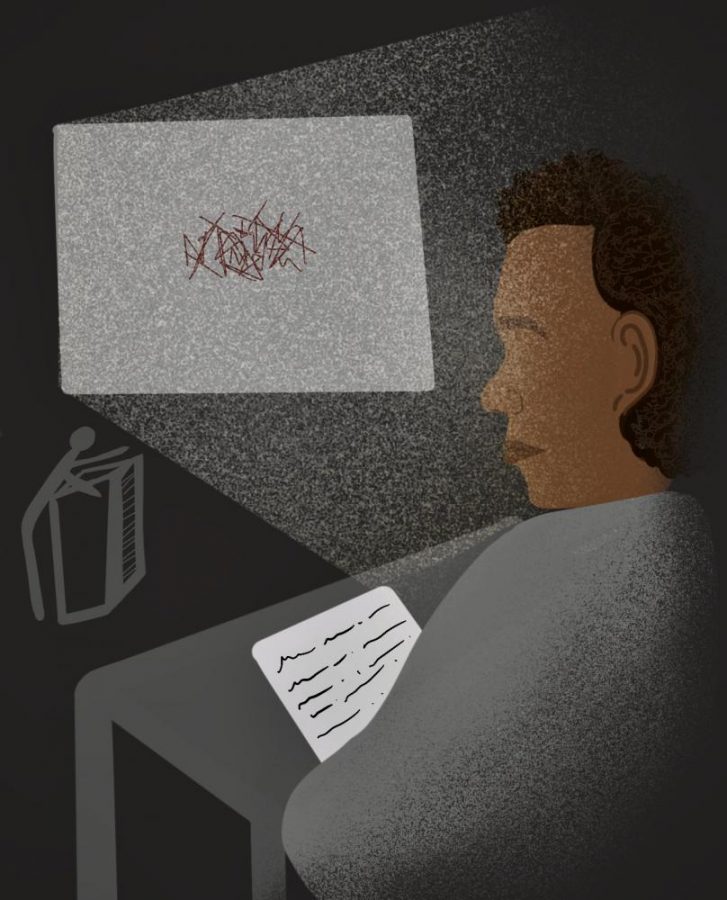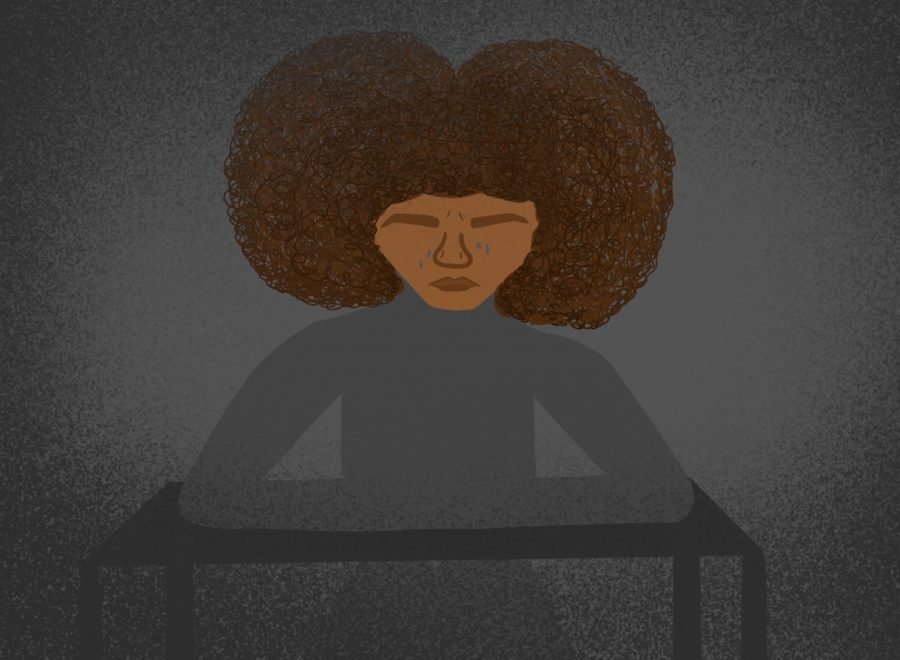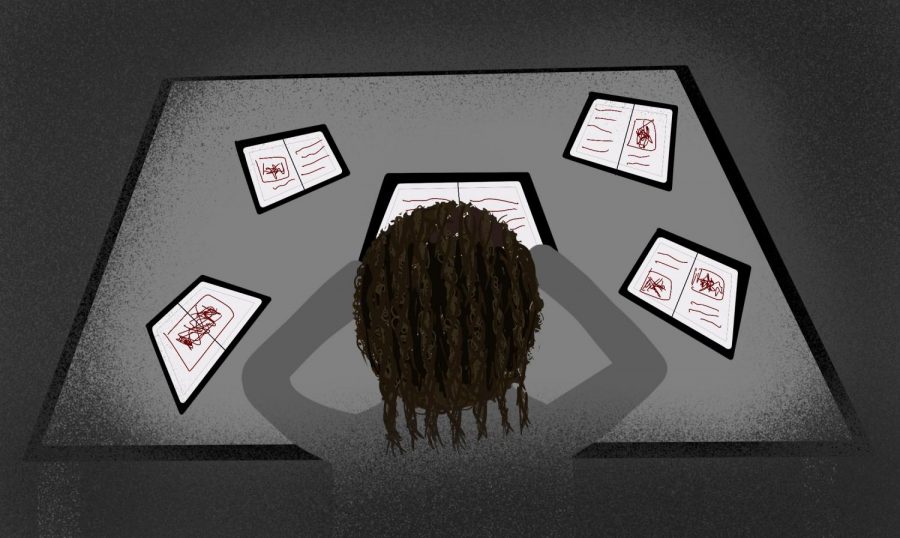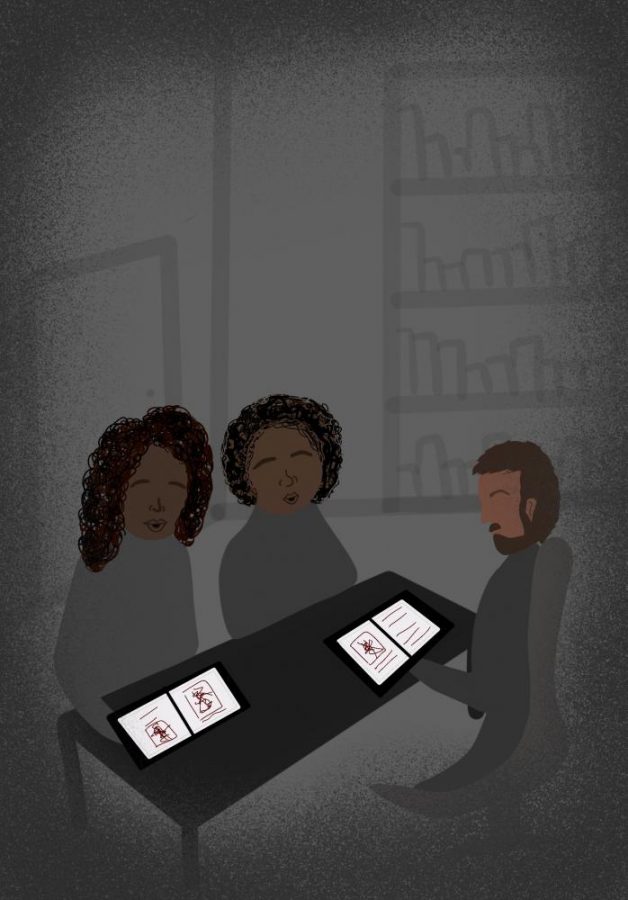Content Warning: This article contains mentions of racial trauma, slavery, violence against Black and Brown bodies and racial slurs that can be disturbing or triggering.
Black Student Union co-President Kayla Merriweather remembers being immersed in her Iberian Atlantic class when a graphic black and white photo of a formerly enslaved man flickered onto the projector screen. With an instinctive slide change and no warning, her professor transformed the fall 2019 Spanish history class into a site of pain. The Gallatin junior’s stomach churned, disrupting her typical classroom calm. But this wasn’t the first time she’d felt this way.

In fall 2018, her Social and Cultural Analysis 101 professor read the n-word from white LGBTQ activist Carl Wittman’s “A Gay Manifesto” and justified the act. Another time, the professor of her International Human Rights class read the n-word from a text without addressing it at all.
She recalled those moments like they happened yesterday, and those were just the first three that came to her mind.
“To have professors openly use racial slurs in class or show really graphic images of Black bodies literally just being torn apart — it’s just, as a Black woman, since it speaks so directly to my identity, it’s a lot,” Merriweather said.
Merriweather had a “visceral reaction” to each incident, transforming the way she interacted with classmates, professors and the courses themselves. The incidents created painful memories that consumed her thoughts in those spaces and etched themselves into the remainder of those days.
While reliving the moments in an armless swivel chair of the SCA Department’s lounge, it became clear that those experiences clouded her memory of the courses, and it seemed they’d stick with her for the rest of her college career, too.
To her, these experiences showed that her professors didn’t care much about their actions’ impact on Black students.
“I just don’t feel like they prioritize me as a Black student in their classroom and acknowledge that words and images have power, especially because they’re often related to issues and topics that are contemporary that I confront in my daily life,” Merriweather said.
Merriweather’s experiences are common, especially for students at predominantly white institutions like NYU. Professors expose Black students to images and videos of brutalized Black bodies, say the n-word without hesitation and explore texts that detail Black suffering. Many neglect to include trigger warnings or consider the effect these materials have on Black students’ psyches.

CAS senior Mili Mansaray feels that, as a journalism major, she’s expected to view and write about traumatic subjects “for the sake of news.” But encountering Black suffering and trauma in her required journalism courses always rattled her.
“I’ve had to hold it together because the topic that we’re discussing, the image that we looked at, made me want to break down because it’s just too much for me to synthesize and to stomach,” Mansaray said. “This is just this five minute conversation for [the professor], but what we’re talking about is going to affect me for the rest of my day, if I’m lucky.”
Sometimes, she’s not lucky. The moment her multimedia professor displayed a triggering photo in class is etched in her memory. The image showed photojournalists surrounding 15-year-old Fabienne Cherisma’s body after her murder in the aftermath of Haiti’s earthquake. This instance, coupled with unprompted class discussions on gendered violence, took an immense emotional toll on her.
“I start thinking just about how sh-tty it is to live in this body sometimes and experience this and the ways that this experience is ancestral to me,” Mansaray said. “This is all history has been for the longest time, and it’s the future we’re still going into.”
The hopelessness she feels stems from what clinical psychologist Dr. Monnica T. Williams calls “race-based stress and trauma.” Experiencing racism can take a psychological toll on Black people through “paranoia” and “chronic fear” of further incidents, she says. Over time these feelings can lead to “traumatization” and develop into extreme “psychological distress” and mental illness.
Many Black people, however, feel the trauma from these acts without experiencing them. Williams names this “vicarious traumatization.” She states that learning about racist acts, Black suffering and “race-related danger” unearths painful memories that can trigger traumatization in a Black viewer. According to Williams, this experience is ancestral as family and community members pass down the memories of their and others’ encounters with racism and violence.
“Over the centuries the Black community has developed a cultural knowledge of these sorts of horrific events, which then primes us for traumatization when we hear about yet another act of violence,” she wrote.
Vicarious traumatization can happen to Black students with experiences like Mansaray and Merriweathers’. Exposure to media tinged with a harrowing history — and racism — leaves them uncomfortable or scarred, affecting their mental health beyond the classroom.

Social and Cultural Analysis Professor Nikhil Singh stresses the importance of context in each of his classes. While guiding students through lectures on major thinkers’ work, he ensures that they leave his class comprehending subjects including race, capitalism and empire, and their effect on American society. To punctuate those lessons, he occasionally displays graphic photos with content warnings, creates space for students’ opinions and fosters dialogues on touchy subjects.
A lecture on Frederick Douglass’ autobiography in Singh’s fall 2017 course generated a class debate concerning his reading of the n-word from the text. The topic divided the class, with students of all backgrounds adopting common n-word debate stances — no one should use the word, he, as a non-black professor, shouldn’t speak the word, and, in context, it’s fine if he reads the word. Singh, however, focused his argument on intention.
“This is not a freedom of speech argument, but as teachers, what we do is we teach words in context, we teach discourse in context,” Singh said. “We teach students how to interpret and make sense critically and develop judgment and understanding of complex ideas and arguments.”
While the conversation left him and students without a definitive answer on how he can approach the n-word in texts, he feels that leaving it out of his lectures or giving it excess attention would be pedagogically unethical.
“It’s a problematic word, it’s a word of abuse and it’s a word that impacts people, and I understand all that and I respect that,” he said. “But it’s not something that we can actually escape from because it’s part of the reality that we’re trying to teach and understand.”
In researching the African Diaspora, Keyanah Nurse, a PhD candidate in NYU’s history department, frequently grapples with that reality. As a teaching assistant, she decides what imagery or readings she’ll expose her students to and how. As a Black academic, she navigates the space between affirming the pain that comes with racial trauma and ensuring that students understand where that pain comes from.
“If we’re studying the history of the transatlanic slave trade, I do think that there’s a certain value to showing some of the more grotesque elements of it, as long as it’s always appropriately contextualized within a good discussion that doesn’t lean on just showing it for the shock value of it,” Nurse said.
While triggering Black students is a problem, ignoring this imagery creates a different one.
“People don’t walk away from the conversation fully understanding or fully internalizing the stakes of what you’re talking about,” she said.
This danger isn’t limited to images of Black suffering; it applies to genocide as well as gendered and religious violence. However, the traumatic images professors show have distinct characteristics: they depict marginalized groups’ suffering against myriad representations of privileged groups’ lives.
“It’s almost like if you are representing white people, you don’t show those images in the first place, so you never have that content warning,” Nurse said. “If the only images you show are of Black and Brown people, or women or trans folk, always surrounded in violence, then that is also something to consider.”
Mansaray, Merriweather and Nurse cited academia’s roots in white supremacy and racism as the reason professors adhere to this practice. Merriweather referred to it as “an academic fascination with Black suffering.”
Stacie McCormick, assistant professor and specialist in African Diasporic literature at Texas Christian University, thinks that this stems from “a long history of white investment in Black suffering.” In her article for the African American Intellectual History Society, she explains that white culture understands Black people and Blackness through “rubrics of containment, pain and subjection.”
“We are a society conditioned to see Blackness in a certain way and this certain way aligns with how a significant number of people in the American public need to see Blackness – as objectified, disfigured, derided,” McCormick wrote.
Because academia was created to enrich white male minds, and changes to its core principles fall short, professors unknowingly maintain the continued presentation of Black suffering in classes. This cycle reinforces America’s subconscious association of Black people with pain and its roots in white supremacy and racism.
“It’s that subconscious element of who’s human,” Mansaray said. “Who’s deserving of discretion, of decency, of empathy? Who are people that you can relate to? Whose pain can you relate to? Whose pain do you see as valid?”

If Merriweather could, she’d tell her professors how valuable it would have been for them to check in with her and other black students. She’d say that they should have dismantled the “professor-student hierarchy” in their class and consider their students’ identities more when they put together their syllabi.
Given the same opportunity, Mansaray would tell her journalism professors to take more accountability for the negative mental impact they had on her and other Black students.
Merriweather and Mansaray want active care from their professors and consideration for the effects of racism on Black students that manifests in intentional action. But professors have to decide what actions work best for their course and their students.
“With the content warnings, the trigger warnings, the opportunity to do alternative assignments, I think that just communicates to me, as the student, that the professor values my academic pursuit,” Merriweather said.
A content warning can dismantle the power dynamic between professors and students, too. According to Nurse, clear and specific trigger warnings are about getting student consent and informing them of potential triggers.
“It’s really flagging for people that one, I understand that you may not respond well to these images, so I’m giving you the opportunity to consent to seeing them or not seeing them,” Nurse said. “But also letting students know that I’m opening up space for you to have a conversation with me about it.”
Mansaray, Merriweather and Nurse also insisted on the importance of student-professor conversations about potentially triggering content. While many Black students have to start these conversations, professors have to create what Nurse calls “an intellectual community” in their classes that welcomes and fosters them. Professors can’t know everything that complicates their Black students’ experiences, but with a willingness to listen, learn and accommodate these needs, they can start.
Black students understand the importance of sharing traumatic historical images and texts in class. Like Mansaray, however, many believe that those shouldn’t be the only historical representations of Blackness and Black people that students see in class.
“What about images of Black joy and resilience?” Mansaray asked. “Our triumphs? Blackness outside of contestation with white oppression and white colonization? What do Black people look like when they’re not fighting the white power? What is our existence outside of this constant battle?”
A version of this article appeared in the Monday, April 20, 2020 e-print edition. Email Tatyana Tandanpolie at [email protected].





















































































































































